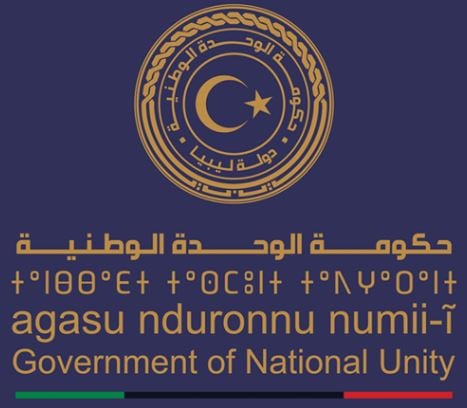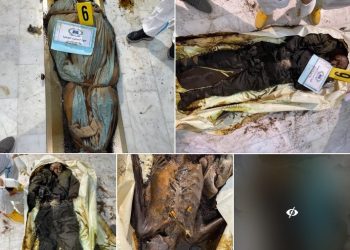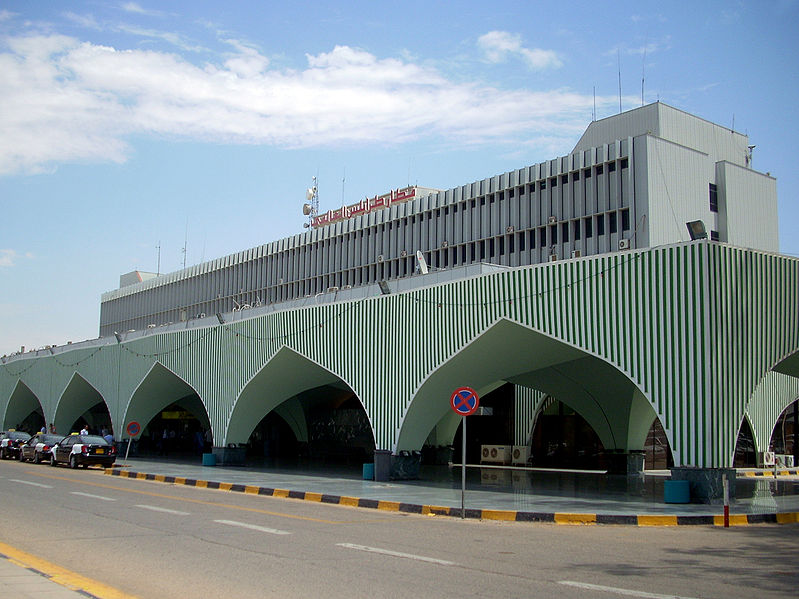By Libya Herald staff.

Tripoli, 6 February 2015:
Two beautiful Ottoman-era tombs in a central Tripoli district have been destroyed in yet another assault on . . .[restrict]the capital’s heritage.
Zawiyat Al-Dahmani residents were appalled this morning to find a pile of rubble in place of the domed and whitewashed tombs that had adorned one corner of a small local park for more than a century and a half.
Until August 2012, the tombs held the remains of members of the Karamanli family – mainly daughters of the pashas – which ruled Tripoli in the early 19th century. The tombs, opposite the currency closed British ambassador’s residence, were all that remained of an ancient graveyard (formerly on the outskirts of Tripoli) after Italian development of the area in the early 20th century. There had been three such buildings but one was destroyed during the Qaddafi era.
The bodies were dug up and removed by militants in August 2012, when they attacked and destroyed the nearby Sidi Al-Sha’ab Mosque and Shrine opposite Radisson Blu Mahari Hotel, some 100 metres away.

Some local people said they suspected the demolition, carried out either last night or early this morning, was the work of Islamic extremists, who have systematically targeted ancient mosques and other Islamic cultural artefacts since the 2011 revolution.
Tripoli Central Municipality, which turned a blind eye to a number of previous acts of cultural destruction has condemned the attack as an act of vandalism.
“There was nothing left there that went against any Islamic beliefs, so such people had no reason to attack these buildings,” Wasim Elburawi the head of Culture and Civil Societies at Municipality of Central Tripoli told the Libya Herald. “Everything had already been removed from inside and there was not even any symbolism on the walls – inside and out were just white walls.” He added that the domed structures, which was all that remained, were fine examples of Islamic architecture.
“The people who did this were either vandals who just want to destroy Tripoli, or tomb-raiders hunting for treasure,” Elburawi said. When tombs in a mosque in Tripoli Old Town were attacked last year, the perpetrators had left behind tools that revealed that they had been looking for such treasure, he explained. “Some people believe that dead bodies used to be buried with gold and jewellery, or that there is treasure to be found inside or beneath the tombs.”
The incident has caused great upset in Zawiyat Al-Dahmani. “These people are trying to destroy every last thing of beauty in Tripoli,” one local resident said sadly. “There will soon be nothing left at all.”
Two months ago, an Italian colonial-era bronze statue of a pair of fighting lions was removed from the other end of the same park. It was taken for safekeeping by a local civil society organisation called Chrome Foundation for Culture, in cooperation with the Department of Antiquities, after two other statues in Tripoli were ripped from their bases and disappeared without trace.

Yesterday, in a separate attack, a cultural centre in Zawiyat Al-Dahmani was the scene of an arson attack. [/restrict]










